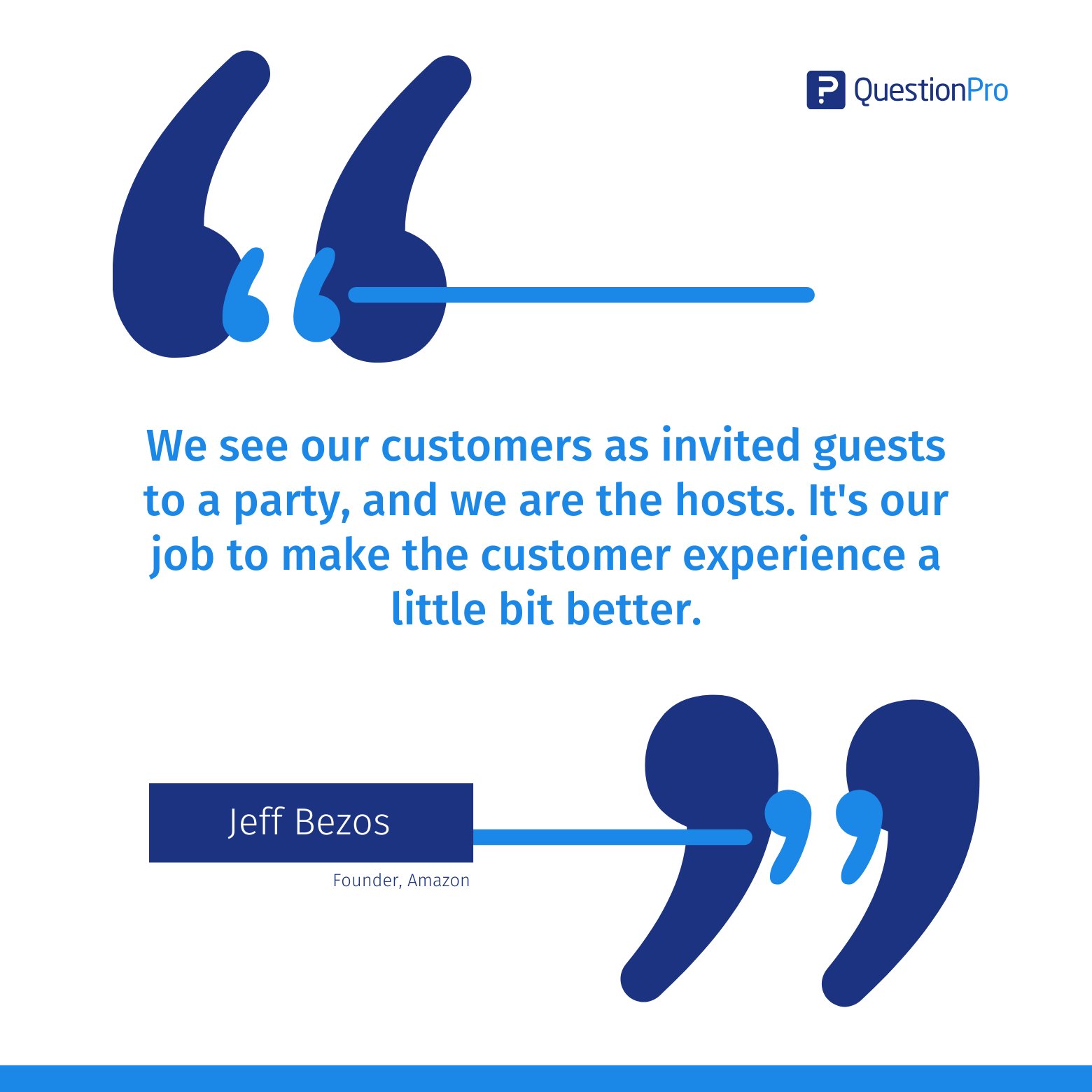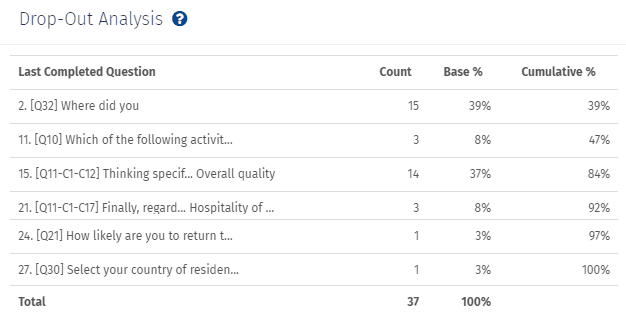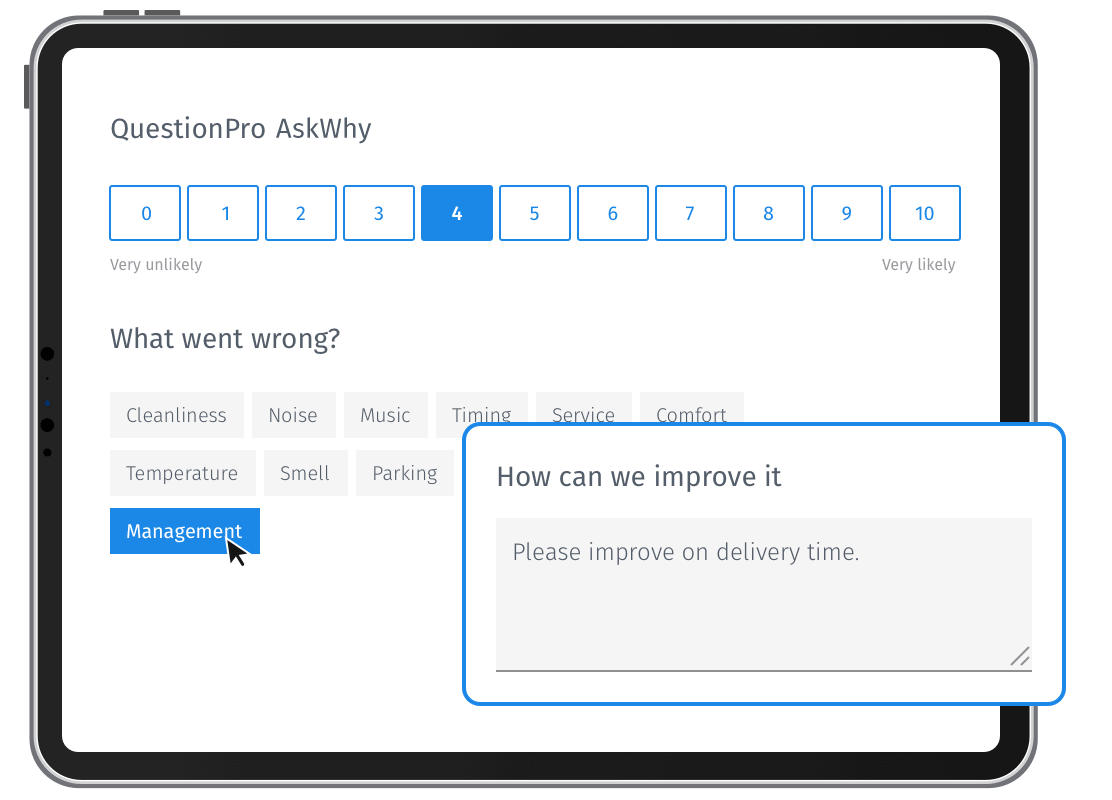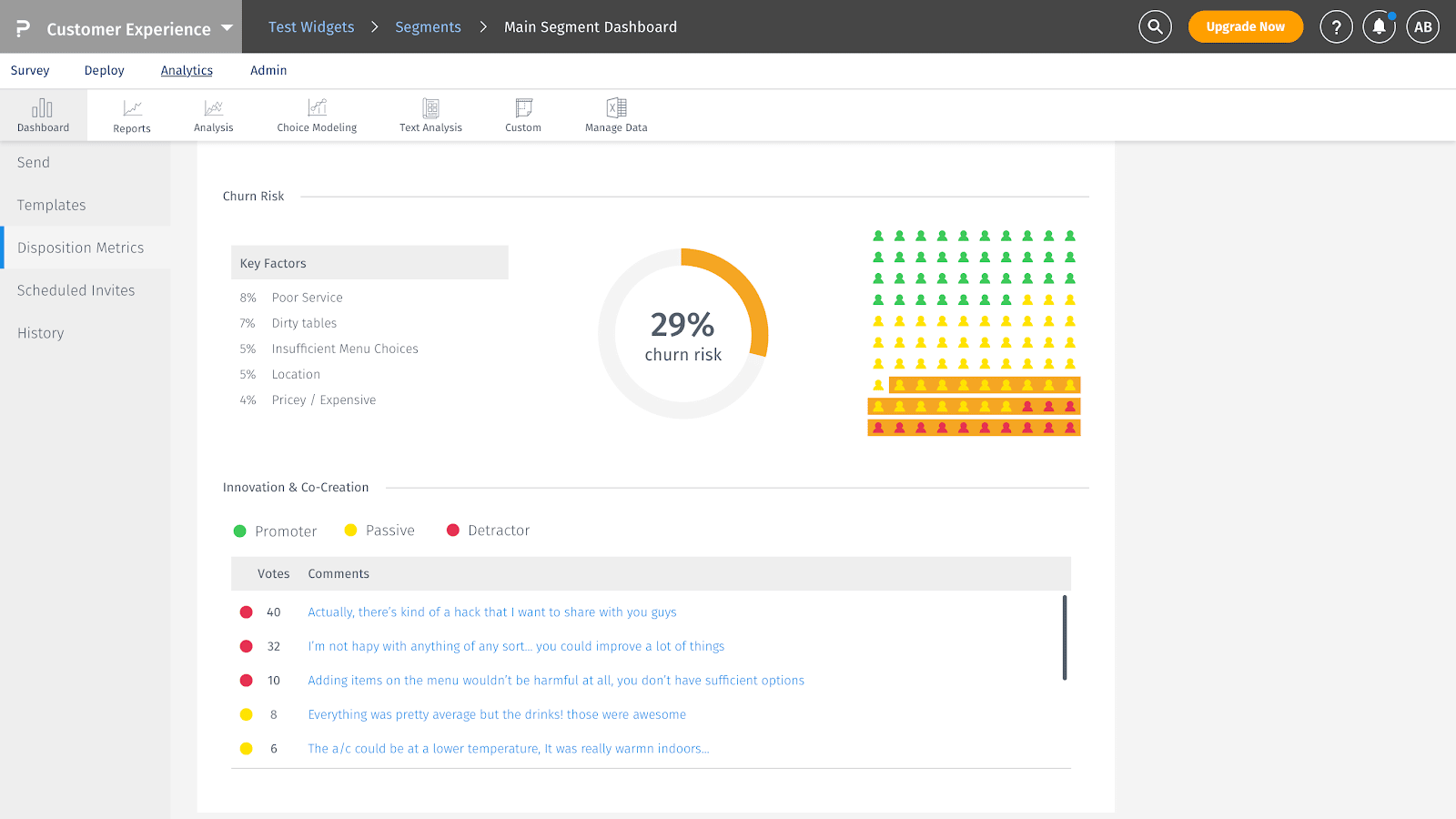
You’ve been collecting VoC feedback with surveys, reviews, and social media comments, but somehow, the real impact is missing. The feedback is there, but the results aren’t happening. Without a clear voice of the customer strategy, all those valuable insights can end up scattered across dashboards, never really driving improvements.
Voice of Customer is a platform that mainly focuses on what the customers need, what exactly their expectations are from your brand, and a strong communication platform to tell the brand if their product needs improvement. An effective VoC strategy is all about truly listening to your customers. It’s a way for businesses to gather feedback, understand what customers are feeling, and use that information to improve their products, customer services, and overall experience.
Your customers are like your special guests, and it’s your company’s job to make their experience better by genuinely caring, listening, and improving.

In this blog, we’ll learn how to develop an effective VoC strategy following a step-by-step process and why it’s so important. We’ll also share some helpful tips and show how the QuestionPro Customer Experience tool can make the whole process easier.
Why a Voice of the Customer Strategy Makes Your Business Better
Having a voice of the customer strategy isn’t just about gathering feedback; it’s about creating real change. When you listen carefully to your customers and actually do something with their input, you close the gap between what they expect and what you deliver. That’s what leads to better experiences, stronger relationships, and smarter growth.
Here’s what happens when you get it right:
1. Higher Customer Satisfaction (And Fewer Headaches)
When customers see that you’re listening, and more importantly, acting on their feedback, they feel seen and valued. That builds trust.
With a solid VoC strategy in place, you can quickly spot common issues, fix them, and smooth out any rough patches in the experience. The result?
More satisfied customers and fewer complaints.
2. Loyalty That Lasts
When you actually use customer feedback to make improvements, people notice. They see their suggestions making a difference, and that builds customer loyalty.
Loyal customers are more likely to:
- Stick with your brand instead of switching to competitors
- Tell their friends and family about you
- Forgive the occasional mistake because they know you care
- Become long-term supporters, not just one-time buyers
At the end of the day, loyalty like that leads to growth that lasts.
3. Innovation That Actually Matters
Your customers often see things you don’t. They spot problems, gaps, and opportunities that might be invisible from inside your organization. That’s why a strong voice of the customer strategy is so powerful. It turns customer insights into real innovation.
When you listen carefully to feedback, you uncover ideas for new products or features that people actually want. You’ll also find smarter ways to deliver your services, making interactions smoother and more efficient. Most importantly, you’ll stay ahead of customer needs before they even have to ask.
In a way, your customers become an extension of your innovation team, helping you grow in the right direction.
4. Smarter Decisions, Every Time
A good VoC strategy isn’t just about listening; it’s about making better decisions. Instead of guessing what your customers want or relying on gut feelings, you get direct insights from the people who matter most.
This helps you focus on the right projects, improve your products and services faster, and avoid wasting time and money on things that customers don’t actually care about. Plus, you might even discover new ideas or opportunities you hadn’t considered before.
The result?
Better decisions that benefit both your business and your customers.
5. A Competitive Advantage That’s Hard to Beat
Lots of companies say they listen to customers, but very few actually follow through. When you build a voice of the customer strategy into everything you do, you create a real competitive edge.
You’ll become the brand known for:
- Listening
- Acting fast
- Continuously improving the experience
Over time, this helps you stand out, not just for what you sell, but for how well you listen to your customers.
What You Might Like: Share of Voice: What It Is, Importance + How to Measure
How to Build a Voice of the Customer Strategy That Actually Works
A strong voice of the customer strategy isn’t just about collecting feedback; it’s about creating a system that helps you understand what your customers are really saying and then doing something meaningful with it. When done right, it leads to better experiences, smarter business decisions, and stronger customer relationships.
Here’s a clear, step-by-step guide to help you build a strategy that actually delivers results:

1. Start with Clear Goals
Before you jump into surveys or feedback tools, take a step back and ask yourself:
What are we trying to achieve with this feedback?
Whether it’s improving customer satisfaction, reducing churn, identifying product gaps, or tracking sentiment over time, your goals should guide every part of your voice of the customer strategy. Think of this as your north star.
Ask yourself:
- What outcomes are most important to our business?
- What problems are we trying to solve?
- How will we know if we’re succeeding?
Having clear goals keeps your team focused and makes it easier to show the value of your VoC efforts down the road.
2. Identify and Engage Key Stakeholders
Building a successful voice of the customer strategy isn’t something one team can do alone. It requires collaboration across departments because each part of your organization sees the customer experience from a different angle.
- Product teams interact with feedback about features and usability.
- Marketing hears how customers describe your brand and what resonates with them.
- Sales and support teams are on the front lines, handling customer concerns and solving problems in real time.
- Leadership, meanwhile, focuses on aligning customer feedback with overall business goals.
When you involve all of these teams early on, you create shared ownership of the process. Instead of feedback getting lost in a report or stuck in a silo, it becomes actionable and effective.
Each team knows how they can contribute and how they can benefit. Product gets ideas for new features or improvements. Marketing fine-tunes messaging based on real customer language. Support can resolve common issues faster. Leadership stays connected to the customer voice while driving big-picture strategy.
When everyone is on board, feedback doesn’t just sit in a dashboard; it fuels real change.
3. Map Customer Journeys and Touchpoints
To collect the right feedback, you first need to understand where and how customers are interacting with your brand. That’s where customer journey mapping comes in.
Look at every step of the experience, from the first website visit to post-purchase support, and even cancellation or offboarding moments. Each of these stages is an opportunity to listen and learn. Your customers might share feedback after using a product, talking to support, or completing a transaction. They might leave a review or mention your brand on social media. All of these touchpoints matter.
By mapping out the journey, you can identify where feedback is already being collected and where there might be gaps. This ensures you’re not just listening when things go wrong—you’re capturing the full story.
You can also make your voice of the customer strategy even more effective by segmenting your customers. Look at their behaviors, loyalty levels, demographics, or overall value to your business. This helps you personalize your approach and focus on the insights that matter most.
4. Choose the Right Tools to Listen
There’s no one-size-fits-all method for collecting feedback. The best voice of the customer strategies use a mix of Voice of the Customer Tools depending on the touchpoint and customer.
Here are some of the most useful options:
- Surveys: Email, SMS, or in-app for structured customer feedback data like Customer Satisfaction (CSAT) or Net Promoter Score (NPS)
- Social listening: To pick up on spontaneous, unfiltered feedback
- Online reviews: For understanding broader public sentiment
- VoC platforms: Bring everything into one place for better analysis
- AI-powered tools: To extract trends, emotions, and themes at scale
Use a combination that provides both numbers and real-life stories. That’s how you get a full picture of what your customers are experiencing.
5. Gather and Bring Together Customer Feedback
Once your tools are in place, start gathering feedback from every meaningful touchpoint. Centralize your customer data so it’s easy to access and compare, and make sure you’re updating it regularly to keep things relevant.
You can:
- Monitor social media and reviews for spontaneous feedback
- Use interviews or focus groups for deeper context
But the real magic happens when you turn all that raw feedback into useful insights. Look for patterns, sentiment shifts, and root causes behind problems. AI tools can help sort and group comments so you don’t miss what matters.
Great analysis includes:
- Benchmarking key metrics
- Segmenting feedback by customer type or region
- Prioritizing issues based on impact
- Understanding why things are going wrong, not just what’s going wrong.
6. Turn Insights Into Action
Now that you’ve got the insights, it’s time to put them to work. A strong voice of the customer strategy isn’t complete without action.
Use frameworks like RICE (Reach, Impact, Confidence, Effort) to decide what to tackle first. Then, collaborate with your teams to create clear action plans, such as updating product features, improving service processes, or training your support staff on common customer complaints.
Keep track of progress by measuring the impact of your changes on customer satisfaction, loyalty, and retention.
And don’t keep your findings to yourself. Share insights regularly across the company. Use dashboards, reports, or quick updates during team meetings. The more visible your Voice of Customer program is, the more people will act on it.
Recommended Read: 5 Best Practices on How to Strengthen Your VoC Program
Best Practices to Make Your Strategy Work
Collecting feedback is only part of the job. A successful voice of the customer strategy goes beyond just gathering customer data; you need to act on it in thoughtful, customer-centric ways. Otherwise, you risk turning valuable insights into just another report that sits on a shelf.
Here are five best practices to help you get the most out of your VoC program and truly improve the customer experience:
1. Listen Across Multiple Channels
Your customers aren’t all reaching out in the same way. Some interact through your website, others leave reviews on social media, send emails, use chat support, or even share feedback in person. That’s why a smart voice of the customer strategy includes multiple feedback channels, not just one.
When you listen across different platforms, you hear from a wider range of customers and get a more complete view of their journey. You’ll catch things you might miss if you focus on just surveys or online reviews. Additionally, by gathering feedback at different touchpoints, you can spot patterns faster, fix issues before they grow, and create smoother, more connected experiences.
2. Use Both Numbers and Stories
It’s easy to get stuck on the numbers; metrics like NPS, CSAT, or CES are useful for spotting trends. But if you stop there, you’re only getting part of the story.
A strong voice of the customer strategy combines quantitative data with qualitative insights (the actual words your customers use). Open-ended responses reveal the emotions behind the numbers. They tell you why a customer gave a certain score, what really matters to them, and how they feel about the experience.
When you combine both, you get deeper, more actionable insights that lead to better decisions.
3. Prioritize and Segment Feedback
Once you start collecting feedback, you’ll realize quickly there’s a lot of it. Not every comment needs immediate action, and not every piece of feedback carries the same weight. That’s why prioritizing is key.
Focus first on the insights that impact:
- Customer satisfaction
- Customer loyalty
- Business performance
At the same time, segment your feedback to understand different customer groups. Are you hearing from loyal customers or new ones? Is the feedback about a specific product, service, or region? Did it come from a survey, a review, or a support ticket?
When you organize feedback this way, you can solve urgent problems first, develop targeted fixes for specific groups, and make smarter, data-driven decisions that actually improve the customer experience.
Customer feedback shouldn’t stay locked inside the CX team. A strong VoC strategy shares insights across the whole company.
Product teams can use it to improve features. Marketing can adjust messaging to better match real customer sentiment. Sales teams can understand customer objections and refine their pitch. Leadership can align strategies with what customers actually need.
Make VoC insights part of regular meetings, reports, and team discussions. When everyone has access to customer feedback, your whole company can work together to create better experiences.
5. Close the Loop and Tell Your Customers
One of the most important parts of any voice of the customer strategy is closing the feedback loop. Customers need to know that their voice made a difference.
When you make a change based on feedback, don’t keep it a secret. Let your customers know with a simple message like:
“You said, we did.”
This builds trust, shows customers that their opinions matter, and encourages them to keep sharing their thoughts in the future. Over time, it turns feedback from a one-way conversation into an ongoing partnership between you and your customers.
Follow Up With: 14 Best Voice of the Customer (VoC) Software & Tools in 2025
How QuestionPro Helps You Build an Effective Voice of the Customer Strategy
Building a voice of the customer strategy can feel like a big task, especially when you’re juggling different tools, data sources, and team priorities. That’s where the QuestionPro Customer Experience tool makes things easier. Instead of managing a scattered feedback process, you can use one platform to collect, understand, and act on customer feedback, all in one place.

Here’s how QuestionPro helps you create a VoC strategy that actually works:
Collect Customer Feedback from Every Touchpoint
Customers interact with your brand in lots of different ways. Some may fill out a survey on your website. Others might send feedback through an app, reply to an email, or share thoughts offline after a store visit. QuestionPro helps you listen to all of it.
With QuestionPro, you can easily gather feedback across:
- Surveys
- Emails
- Websites
- Mobile apps
- In-person or offline interactions
This ensures you’re capturing real-time thoughts no matter where customers are in their journey. The result?
A complete view of the customer experience, not just a snapshot.
Use Ready-to-Go Templates That Ask the Right Questions
You don’t need to be a research expert to run an effective voice of the customer strategy. QuestionPro makes it simple with pre-built Voice of the Customer Survey Template and question types designed specifically for customer experience programs.
Whether you’re running a CSAT survey, NPS check-in, CES score, or using AskWhy for deeper insights, QuestionPro helps you ask the right questions to get answers that actually drive action.
Organize and Analyze Customer Feedback Effortlessly
Once the feedback starts coming in, the next challenge is making sense of it. QuestionPro’s built-in analytics tools simplify this process. You’ll get access to easy-to-read dashboards where you can:
- Identify trends
- Track customer sentiment
- Filter responses by segment or touchpoint
- Spot the issues that need immediate attention
This helps you go beyond collecting VoC data; you’ll actually understand what your customers are telling you, faster.
Act on Feedback in Real Time
The value of a voice of the customer strategy isn’t just in listening, it’s in how quickly you respond. QuestionPro helps you move from insight to action without delay.
Here’s how it works:
- Automated Alerts: When negative feedback comes in, the right team is notified instantly.
- Instant Follow-ups: Send a personalized message to customers right after they share feedback, showing them you care.
- Team Collaboration: Easily share insights across departments so product, marketing, and support teams can work together to solve problems.
- Prioritization Tools: Focus on the customer input that impacts satisfaction and loyalty the most, so your team knows where to act first.
- Real-Time Dashboards: Watch trends unfold as they happen, so you can make faster, smarter decisions.
By speeding up the process, you not only fix problems quicker, but you also build trust and show customers that their voice has real power.
Close the Loop and Build Customer Trust
Collecting feedback is important, but closing the loop is what makes your voice of the customer strategy stick. QuestionPro makes it easy to follow up with customers, update them on what’s changed, and let them know their input directly shaped the next steps.
This creates a true partnership between you and your customers. When people see that their voice leads to action, they’re more likely to stay engaged, share more feedback, and remain loyal to your brand in the long term.
In Case You Missed It: Why Closing the Loop Is the Future of CX
How to Improve Voice of the Customer Strategy Without Hurting CX
Getting customer feedback is important, but how and when you ask for it can make all the difference. A great voice of the customer strategy should feel like a natural part of the customer journey, not an annoying detour.
The problem? Many companies focus so much on collecting more data that they forget about the customer’s actual experience.
Suppose you rent a car, and before you’ve even handed back the keys or received your receipt, a survey email lands in your inbox.
That sends a clear (but wrong) message:
“We care more about getting your feedback than making sure your experience is complete.”
1. Feedback Should Feel Like Part of the Experience, Not a Chore
When you’re improving your CX or VoC strategy, here’s something easy to forget: asking for feedback is part of the customer experience, too.
If your survey feels like a burden, too long, irrelevant, or poorly timed, customers will get annoyed. And that’s the exact opposite of what you’re trying to achieve.
Ask Yourself These Questions:
- Are we asking for feedback at the right time?
Customers should be done with their journey before you ask them how it went.
- Are our surveys too long?
Keep it short and sweet. Nobody likes being stuck in a never-ending questionnaire.
- Are we asking the right questions?
Don’t make customers answer questions about things they didn’t even experience. That’s frustrating.
- Do we know why people stop filling out our surveys?
Track how often people start a survey but don’t finish it. It’s a huge clue that something isn’t working.
2. Why Customer Drop-Outs Are a Big Deal
When a customer starts your survey but bails halfway through, that’s not just a missed data point; it’s a signal that something’s wrong.
Why Customers Drop Out of Surveys:
- The survey is too long.
- The questions don’t make sense or aren’t relevant.
- The timing feels pushy or intrusive.

That’s why it’s so important to keep an eye on drop-out rates and survey analytics. If you’re not checking these numbers, you might accidentally be creating bad experiences in the name of gathering feedback.
3. Make Feedback Easier with Smarter Tools
The good news?
Collecting feedback doesn’t have to be complicated. A useful tool like Askwhy is making the process simpler and more human.

Instead of bombarding customers with endless questions, this tool lets customers quickly share what went wrong, what went right, and how you can improve, without wasting their time or patience.
What You’ll Get with Askwhy:
- Better predictions about which customers might leave.
- Real ideas from customers to help you improve.
- A smoother, easier feedback process for everyone.

Make the Voice of the Customer Strategy Your Competitive Advantage
Creating a successful voice of the customer strategy isn’t just about sending out surveys or collecting scores; it’s about building a continuous system of listening, learning, and acting. It’s how you move from collecting feedback to creating real, meaningful change for your customers and your business.
In this guide, we’ve gone through the key steps that help create an effective Voice of Customer strategy. We also explored best practices to help you move beyond a one-time project and build a VoC strategy that drives long-term success.
The good news? You don’t have to tackle all of this alone. Platforms like QuestionPro Customer Experience can simplify every part of the journey, from gathering multi-channel feedback to analyzing it, sharing insights, and implementing improvements more quickly. It’s about removing the hassle so you can focus on what really matters and create better customer experiences.
Ready to make customer feedback your most powerful business tool? The next move is yours.
Frequently Asked Questions (FAQs)
Answer: A clear voice of the customer strategy helps businesses truly understand customer needs, build stronger relationships, boost satisfaction, and make informed decisions that drive growth.
Answer: By listening to customer feedback and acting on it, a voice of the customer strategy helps businesses fix issues, enhance experiences, and show customers they are valued, leading to higher satisfaction.
Answer: Closing the loop means informing customers how their feedback led to changes, which builds trust and shows that the voice of the customer strategy isn’t just about listening, but also about action.
Answer: By addressing pain points and acting on feedback in real-time, a voice of the customer strategy helps businesses fix problems before they escalate, reducing churn and improving customer retention.
Answer: A voice of the customer strategy should be reviewed and updated regularly, especially when market trends, customer behavior, or business goals change, to stay relevant and effective.







